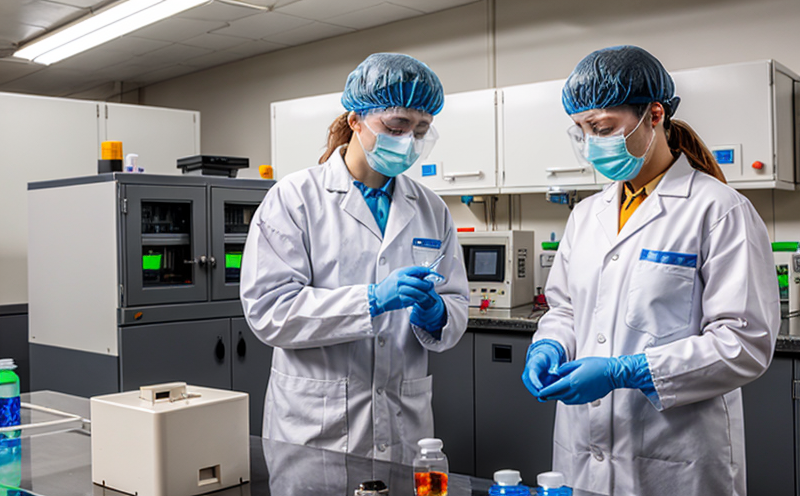EN 16471 HMF Quantification in Processed Honey
The presence of hydroxymethylfurfural (HMF) is a critical indicator for the quality assurance and safety of processed honey. This test ensures that the processed honey meets the strictest international standards, including EN 16471, which specifies the methods for quantifying HMF in honey. The ability to accurately measure HMF levels allows food processors and manufacturers to maintain product integrity and comply with regulatory requirements.
Hydroxymethylfurfural is a byproduct of fructose and glucose degradation during heating processes or due to microbial activity, which can lead to spoilage in honey. In processed honey, the presence of HMF may indicate poor quality control practices, excessive heat treatment, or storage conditions that are not optimal for maintaining product freshness. The quantification of HMF helps manufacturers ensure their products meet customer expectations and regulatory standards.
The EN 16471 standard provides a robust framework for testing processed honey to determine the level of HMF present. This standard is particularly important for food companies that need to demonstrate compliance with EU regulations on food safety and quality. By adhering to this standard, they can ensure their products are safe and suitable for consumption, which is essential in today's highly regulated market.
The test involves several steps. First, a sample of the processed honey is prepared according to the specified procedures outlined in EN 16471. This preparation ensures that any potential interference from other compounds does not affect the accuracy of the HMF quantification. Next, the sample undergoes analysis using high-performance liquid chromatography (HPLC) or gas chromatography–mass spectrometry (GC-MS), which are highly sensitive and precise methods for detecting even trace amounts of HMF.
Once the analysis is complete, the results are compared against the reference values provided in EN 16471. These reference values define the acceptable levels of HMF that ensure the processed honey meets quality standards. If the HMF level exceeds these limits, it indicates a potential issue with the processing or storage conditions and may necessitate corrective actions.
The importance of this test cannot be overstated, especially for those involved in food safety and quality assurance. It allows companies to identify and address any issues early on, ensuring that their products remain safe and of high quality. This proactive approach not only protects the brand reputation but also ensures compliance with international standards.
In conclusion, quantifying HMF in processed honey using EN 16471 is a crucial step in maintaining product integrity and meeting regulatory requirements. By employing this standard, food processors can ensure their products are safe and of high quality, thereby building trust with consumers and regulators alike.
Applied Standards
- EN 16471: Quantification of hydroxymethylfurfural (HMF) in honey
Scope and Methodology
| Step | Description |
|---|---|
| Sample Preparation | The sample of processed honey is prepared according to the specified procedures in EN 16471. This involves homogenizing the sample and filtering it to remove any particulate matter that could interfere with the analysis. |
| Analysis | The prepared sample undergoes HPLC or GC-MS analysis to quantify the level of HMF. These methods are chosen for their precision and sensitivity, allowing even trace amounts of HMF to be detected. |
| Comparison | The results from the analysis are compared against the reference values provided in EN 16471. This comparison helps determine whether the processed honey meets quality standards. |
Why Choose This Test
- Ensures compliance with international food safety and quality regulations.
- Identifies potential issues in processing or storage that could affect product quality.
- Provides accurate quantification of HMF, ensuring processed honey meets the highest standards.
- Builds trust with consumers by demonstrating a commitment to product integrity and safety.





